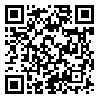BibTeX | RIS | EndNote | Medlars | ProCite | Reference Manager | RefWorks
Send citation to:
URL: http://journal.zums.ac.ir/article-1-1487-en.html
2- Islamic Azad University, Tabriz Branch, Tabriz, Iran
3- Private Office, Meshhad, Iran
Background and Objective: Diabetes is a metabolic disorder that occurs as a consequence of decrease in insulin secretion or resistance to insulin. Most diabetes related treatments have problems with adverse reactions. Natural therapeutics have been in use from long time ago up to present time. Ginseng is a traditional drug used for treatment of many dieses particularly diabetes. The aim of this study was to find out the effect of oral Ginseng on the serum glucose and other biochemical parameters such as lipid profile.
Materials and Methods: In this study 30 male rats with a body weight of 250±25 gr and age of 4-6 months was used. Each animal was housed under controlled temperature (21+_2 C) and standard conditions with free access to food and water. Blood test was carried out to measure glucoses and other biochemical parameters such as cholesterol, TG, ALT, AST and BUN. Animals were equally divided into three groups; 1-control group, 2-the STZ-induced-diabetes (60 mg/kg) group, 3- the STZ-induced-diabetes (60 mg/kg) and150 mg/kg oral ginseng. The study was lasted for 6 weeks. Blood samples were taken and tested for glucoses and other parameters.
Results: The average blood sugar in the control group was 131.1±7.9 mg/dl, but it was higher than 550mg/dl in streptozocine- received group. In group 3, which received ginseng, blood sugar decreased up to 50%. Cholestrol decreased up to 40% in the treatment group. Among the measured parameters HDL showed a 50%decrease in treatment group in comparison with diabetic group. AST and ALT values between the control and treatment groups did not show a significant difference. BUN values decreased from 71.6±6.6 in diabetic group to 50.1±5.7 mg dl in the treatment group.
Conclusion: The results of this study revealed that ginseng can be considered as a substance which decreases blood glucoses, reduces diabetes adverse reactions, and consequently diminishing blood lipids in animal model. However, to apply these results to human, further studies are needed to be carried out.
Received: 2011/06/8 | Accepted: 2014/06/22 | Published: 2014/06/22
| Rights and permissions | |
 |
This work is licensed under a Creative Commons Attribution-NonCommercial 4.0 International License. |




